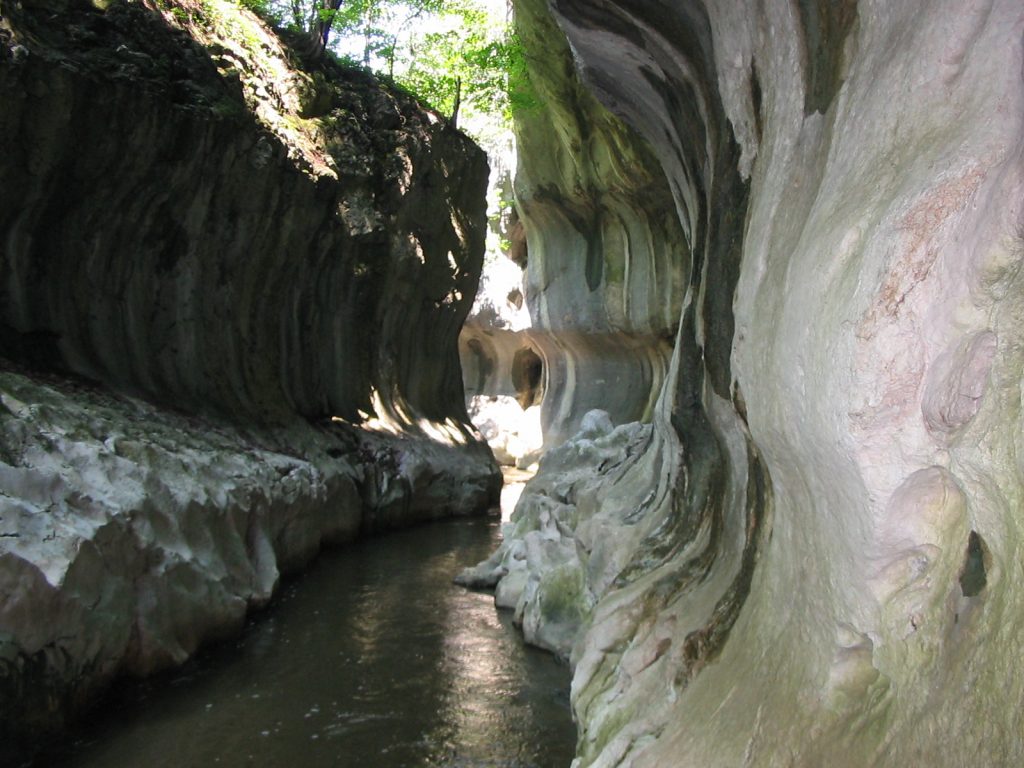Grădiștea Muncelului-Cioclovina Natural Park Grădiștea Muncelului - Cioclovina Natural Park is an area protected by law since 2000, covering an area of 38,184 hectares. The natural park includes, within its limits, six of the most spectacular nature reserves of Hunedoara County, namely the Ponorici-Cioclovina Karst Complex, Tecuri Cave, Șura Mare Cave, Crivadiei Gorges, Ohaba-Ponor Fossil Site, Bolii Cave.

Also within this park are the UNESCO World Heritage sites of Sarmizegetusa Regia, Costești, Blidaru, Luncani-Piatra Roșie and the authentic ethnographic settlements of the Luncani Platform. Since 2004, the Grădiștea Muncelului - Cioclovina Natural Park has its own administration. In the park there are hundreds of caves, hollows, galleries, some gorges and canyons, sinkholes, waterfalls and mountain plateaus.






The landscape of this park takes your breath away, regardless of the season in which tourists choose to visit these places. The variety of relief, the historical "weight", the ethnographic diversity specific to the settlements here, the fauna and flora are just some of the reasons why this area is of tourist interest both for those looking for the "music" of nature and for those who want to go hiking, crossing mountain paths, as well as for those who are passionate about history.
Over 400 caves, hollows and mining galleries in Grădiștea Muncelului-Cioclovina Natural Park
In the Grădiștea Muncelului-Cioclovina natural park there are over 400 caves, oats and mining prospecting galleries. Only the Pestera Bolii ( Disease Cave)is managed and can be visited with a flashlight, without specialized equipment, the rest of the caves and ditches cannot be visited, for reasons of protection of the underground ecosystem and accessibility, requiring the authorization of CPS (Speleological Heritage Commission) and APNGM-C (Administration of the Grădiștea Muncelului-Cioclovina Natural Park) as well as the provision of ropes or diving equipment.
The mining prospecting galleries are closed to the public for safety reasons, they have been built since the 1930s, there exists a risk of collapse. Some caves, hollows or mine galleries are used as shelter for various species of animals (eg bats, badgers, foxes, bears) so access is not recommended.
For speleological exploration, mapping or scientific research in the caves of the Grădiștea Muncelului-Cioclovina natural park, please refer to article 19 of the Park Regulation.
Gorges and cannons in the Grădiștea Muncelului-Cioclovina natural park
Sculpted by the waters that cross them, the gorges and canyons impress us with their length, shape, color or height of the slopes. In the Grădiștea Muncelului-Cioclovina natural park you can visit four gorges and go through a canyon (only with adequate equipment and specialized guides).
Băniței Gorges (nature reserve) are located near Pestera Bolii (Disease Cave) being dug by the Bănița River in the same limestone massif. The gorges are particularly spectacular, offering a rare landscape. Both the variable color of the rocks and the shapes sculpted by the water delight our eyes. On some parts the rocks partially cover the gorgeslike an umbrella.
Crivadiei Gorges (nature reserve) can be visited in the immediate vicinity of Crivadia Tower. The reserve is an enclave of thermophilic species and Dacian and Daco-Balkan elements. Specimens of wild bat (Syringa vulgaris), mojdrean (Fraxinus ornus) and sorb (Sorbus borbasii) are also found. The horned viper (Vipera ammodytes) is also present here.
Red Gorges are located between Cheile Tăii and Peştera Bolii, being dug in the same limestone massif. The gorges stand out through a massive rock wall, over 100 meters, dotted with caves and grottoes. At some times of the year the river that runs through the gorges disappears into the riverbed right next to the rock wall, coming to the surface a few hundred meters below the gorges.
Cheile Tăii ((nature reserve) are located near Petrila, on the Tăii valley that crosses the gorges. It has a special landscape and floristic value, constituting an enclave of thermophilic species on the calcareous slopes such as Syringa vulgaris, Dianthus sp., Saxifraga sp., Fraxinus ornus, Euphorbia sp.



Sinkholes
Sinkholes are places where surface water drains underground. On the territory of the Grădiştea Muncelului-Cioclovina natural park, a number of 57 sinkholes were identified, some of them having a temporary character. After traveling for miles through underground karst systems, the waters emerge from resurfaces springs or caves.
The most spectacular sinkholes are Fundătura Ponorului (God's palm), Lunca Ponoriciului and Poiana, where the beauty is given by the rock walls, the winding route of the rivers, the vegetation specific to the limestone area and the size of the karst depression.

Waterfalls
In the Grădiștea Muncelului-Cioclovina Natural Park there are numerous waterfalls, including the largest waterfall in the Şureanu mountains, 40 meters high. Formed either in gorges or canyons with abrupt walls, being accessible only with adequate equipment and specialized guides, or on more accessible watercourses. In the park there are successive waterfalls and independent waterfalls, from the Cheia, Rea and Jigoreasa valleys. The most beautiful successive waterfalls can be visited in the Şipot and Cioclovina valleys.



Mountain plateaus
Within this park there are many forms of relief that have been conditioned by the type of rock: crystalline schists, granitoids or sedimentary formations (limestone and sandstone). Wide peaks (plains) between 800 and 1,100 meters have developed in the crystalline schists. These represent the last leveling complex (Gornoviţa), which in the western part of the Şureanu mountains extends a lot, bearing the name of Luncanilor Platform.
The presence of limestones and limestone-crystalline lithological contacts break the monotony of the landscape by the presence of steep slopes, isolated rocks and gorges. The surface and deep karst phenomena gave rise to beautiful karst plateaus, among which we mention: Vârtoape, Troian, Comarnice.






More details find on www.gradiste.ro





